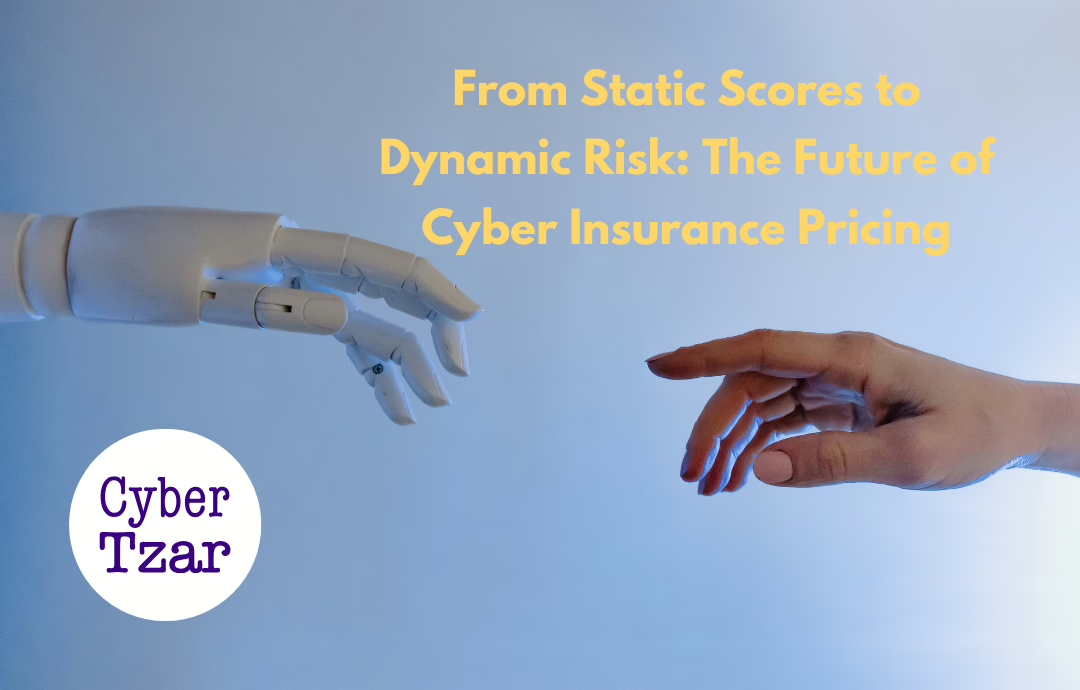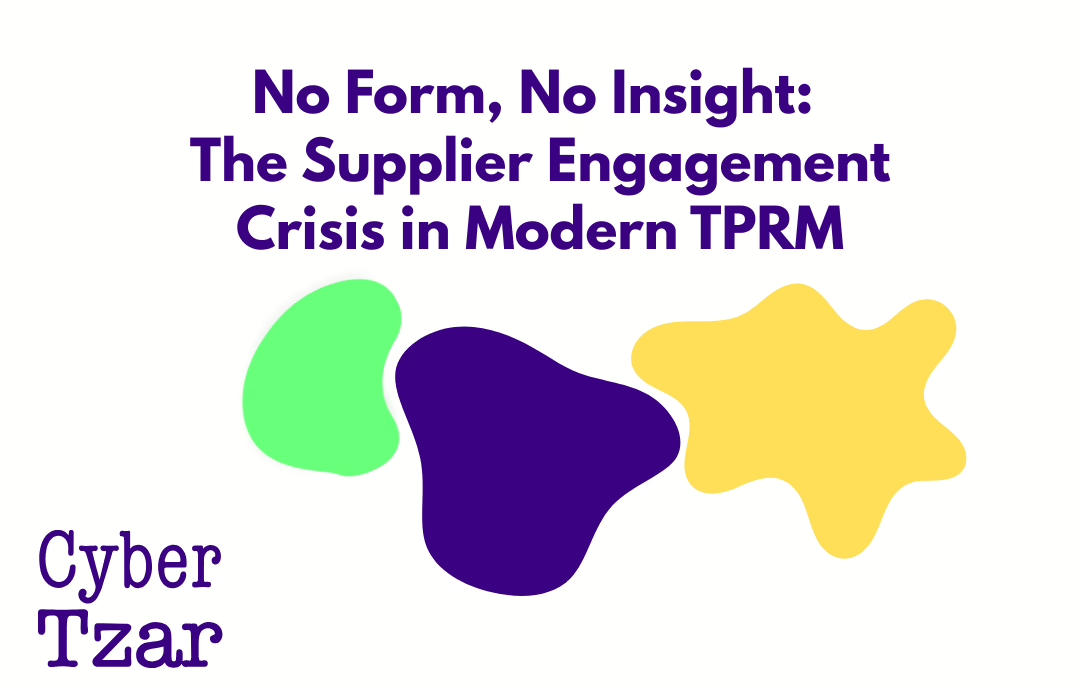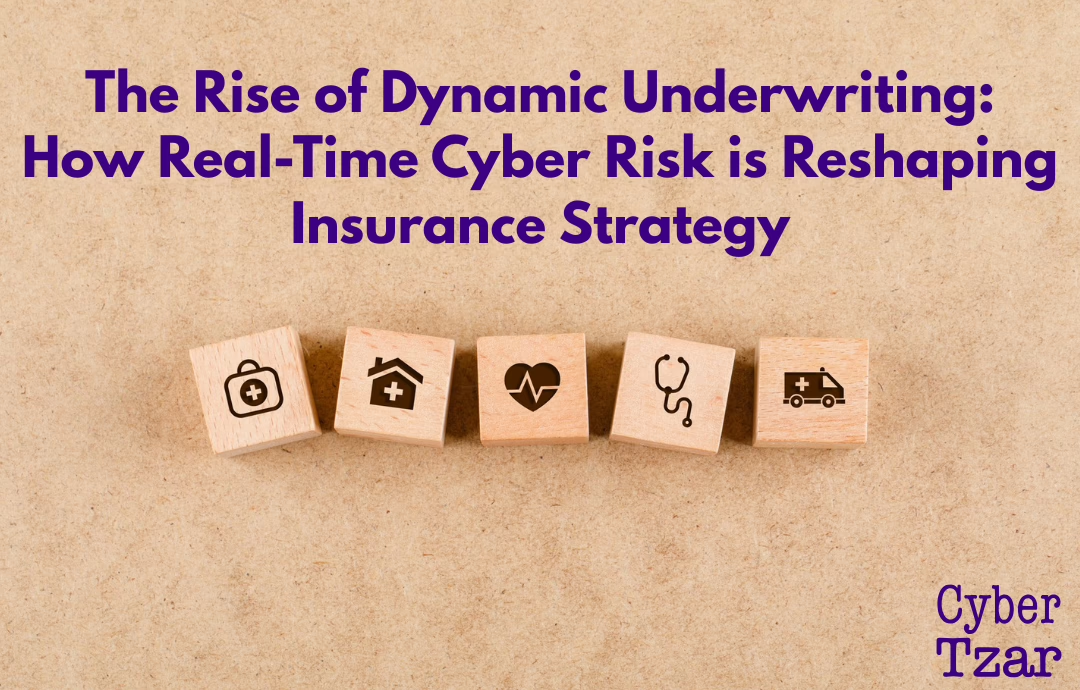Introduction
The cyber insurance market is undergoing a major transformation. For years, insurers have relied on static risk assessments—a one-off evaluation based on questionnaires, industry benchmarks, and past claims data. But as cyber threats evolve in real time, this outdated approach is proving inadequate.
In 2025, the industry is shifting towards dynamic risk quantification, where insurers use continuous security monitoring, real-time threat intelligence, and data-driven risk scoring to determine premiums and coverage.
This article explores how cyber insurance pricing is moving from static scores to dynamic risk models, what this means for businesses, and how organisations can adapt to secure better coverage at fairer prices.
1️⃣ Why Static Risk Assessments No Longer Work
Traditional cyber insurance underwriting relies on static risk assessments, where businesses fill out questionnaires about their security posture. But these assessments:
❌ Quickly become outdated – A company may have strong security today but suffer a breach next month.
❌ Rely on self-reported data – Organisations often overestimate their security maturity.
❌ Fail to detect emerging risks – Cyber threats evolve daily, making static risk scores unreliable.
📌 Result? Insurers struggle to price policies accurately, leading to:
✔ Higher premiums for everyone due to unpredictable claims.
✔ Reduced coverage as insurers limit payouts to minimise risk.
✔ Tougher underwriting standards, making cyber insurance harder to obtain.
💡 A better approach is needed—one that measures cyber risk dynamically, in real time.
2️⃣ What is Dynamic Risk Quantification?
Instead of relying on static questionnaires, insurers are adopting dynamic risk assessment models. These use real-time data, machine learning, and continuous monitoring to measure an organisation’s actual cyber risk.
🔹 Key Features of Dynamic Cyber Risk Models:
✔ Continuous threat monitoring – Tracks vulnerabilities, misconfigurations, and cyber incidents.
✔ Real-time security posture analysis – Uses AI-driven assessments instead of self-reported data.
✔ External attack surface scanning – Detects exposed assets, weak credentials, and dark web threats.
✔ Behaviour-based risk scoring – Measures how well a company responds to threats over time.
📌 The shift from static to dynamic risk models allows insurers to price policies based on a company’s actual security performance—not just a one-time assessment.
3️⃣ How Dynamic Risk Models Are Changing Cyber Insurance Pricing
🔹 1. Real-Time Risk-Based Premium Adjustments
📌 Before: Companies were assigned a fixed premium based on a static risk assessment.
📌 Now: Insurers adjust pricing dynamically based on ongoing risk data.
✅ What This Means for Businesses:
- Companies with strong cybersecurity postures will pay lower premiums.
- Organisations that fail to maintain security hygiene may see premiums increase.
- Insurers may offer “pay-as-you-secure” pricing models, rewarding businesses for reducing risk.
🔹 2. Insurers Will Reward Proactive Security Practices
📌 Before: Insurers could only assess risk at policy renewal.
📌 Now: Businesses can demonstrate ongoing cybersecurity improvements to reduce costs.
✅ What This Means for Businesses:
- Companies that regularly patch vulnerabilities and improve security controls may receive premium reductions.
- Insurers may introduce dynamic discounts for businesses that adopt MFA, encryption, and endpoint security solutions.
- Businesses with incident response plans and good breach response times may receive better coverage terms.
💡 Cyber insurance will no longer be a passive product—it will be an active, managed service.
🔹 3. Greater Scrutiny of Cloud & Supply Chain Risk
📌 Before: Insurers mainly focused on an organisation’s internal security.
📌 Now: Insurers assess external risk factors, including cloud security posture and supply chain vulnerabilities.
✅ What This Means for Businesses:
- Companies using secure cloud configurations (e.g., AWS, Azure) will gain better coverage terms.
- Businesses must demonstrate vendor risk management—ensuring suppliers meet security standards.
- Insurers will use real-time attack surface monitoring to flag risks before issuing policies.
💡 Cyber insurance will become more tailored—no longer one-size-fits-all.
4️⃣ How Businesses Can Adapt to Dynamic Cyber Insurance Models
To secure better coverage at fairer prices, businesses must prove they are actively managing cyber risk.
✅ 1. Implement Continuous Security Monitoring
- Use attack surface management tools to detect vulnerabilities.
- Monitor real-time threat intelligence feeds for emerging risks.
✅ 2. Adopt Risk-Based Security Controls
- Apply Zero Trust principles—don’t assume default trust for any user or system.
- Enforce multi-factor authentication (MFA) and least privilege access.
✅ 3. Strengthen Cloud & Third-Party Risk Management
- Ensure cloud environments follow security best practices (e.g., encryption, logging, and segmentation).
- Regularly audit third-party vendors to confirm they meet cybersecurity requirements.
✅ 4. Demonstrate Cyber Resilience to Insurers
- Maintain incident response and disaster recovery plans.
- Provide insurers with ongoing security reports rather than a one-time assessment.
💡 Businesses that actively manage cyber risk will benefit from lower premiums and better policy terms.
Final Thoughts: Cyber Insurance is Evolving—So Must Businesses
The shift from static risk assessments to dynamic risk quantification is revolutionising cyber insurance pricing. Companies that embrace real-time security monitoring, proactive risk management, and continuous improvement will gain access to better coverage, lower premiums, and stronger financial protection.
🔹 Key Takeaways for Businesses:
✔ Static cyber risk assessments are outdated—insurers now demand real-time risk data.
✔ Premiums will be adjusted based on an organisation’s actual security posture.
✔ Continuous monitoring and proactive security practices will lead to better policy terms.
✔ Companies must demonstrate ongoing cyber resilience to secure affordable insurance.
By adapting to dynamic risk models, businesses can not only reduce their exposure to cyber threats but also secure more cost-effective insurance solutions.
📢 What’s Next?
💡 Next in the series: “Why Your Next Funding Round Could Depend on Your Cybersecurity Posture” (w/c 18 April).
Would you like a cyber insurance risk assessment to improve your insurability? Get in touch today. 🚀



